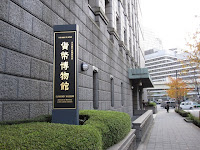

Winter is the season to visit museums.
I visited an exhibition titled “Medicine and Art” at Mori art Museum @ Roppingi Hills.
I visited an exhibition titled “Medicine and Art” at Mori art Museum @ Roppingi Hills.
The museum is in the 53rd floor of the building or about 220 meters high from the ground. Many Japanese museums are in the upper floors.
The exhibition is held jointly by Mori Art Museum and Britain’s Wellcome Collection.
Drawings, life-size models, artificial hands legs and other things related to medicine are displayed. The exhibits from the Wellcome Collection include Charles Darwin’s stick and other interesting things.
Gilles Barbier’s work “The Nursing House” was very impressive for me. Aged Superman, Mister Fantastic (of the Fantastic Four) and other American heroes (and heroines) live in a nursing house. The extended hands and legs of Mr. Fantastic no longer return to the original shapes. Superman carries a drip pole. Even the heroes cannot resist aging...
I took pictures outside the museum as it is prohibited to take photos inside.
The exhibition is held jointly by Mori Art Museum and Britain’s Wellcome Collection.
Drawings, life-size models, artificial hands legs and other things related to medicine are displayed. The exhibits from the Wellcome Collection include Charles Darwin’s stick and other interesting things.
Gilles Barbier’s work “The Nursing House” was very impressive for me. Aged Superman, Mister Fantastic (of the Fantastic Four) and other American heroes (and heroines) live in a nursing house. The extended hands and legs of Mr. Fantastic no longer return to the original shapes. Superman carries a drip pole. Even the heroes cannot resist aging...
I took pictures outside the museum as it is prohibited to take photos inside.





+broad+area,+23+wards.gif)











































